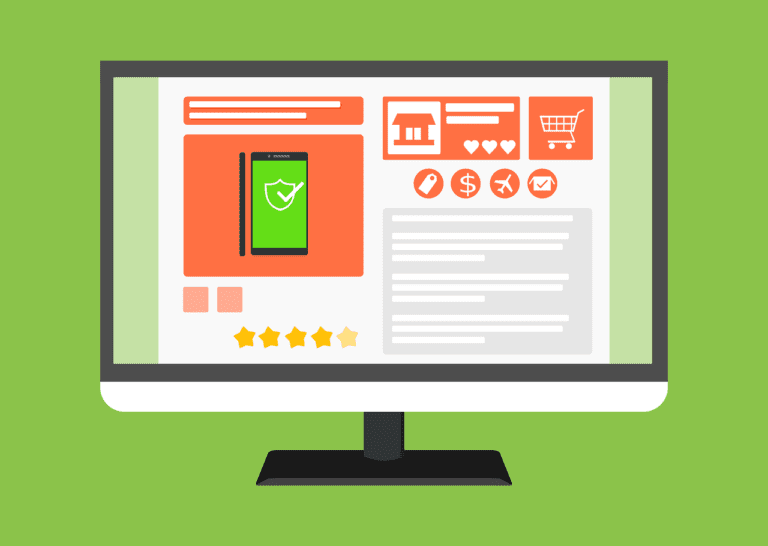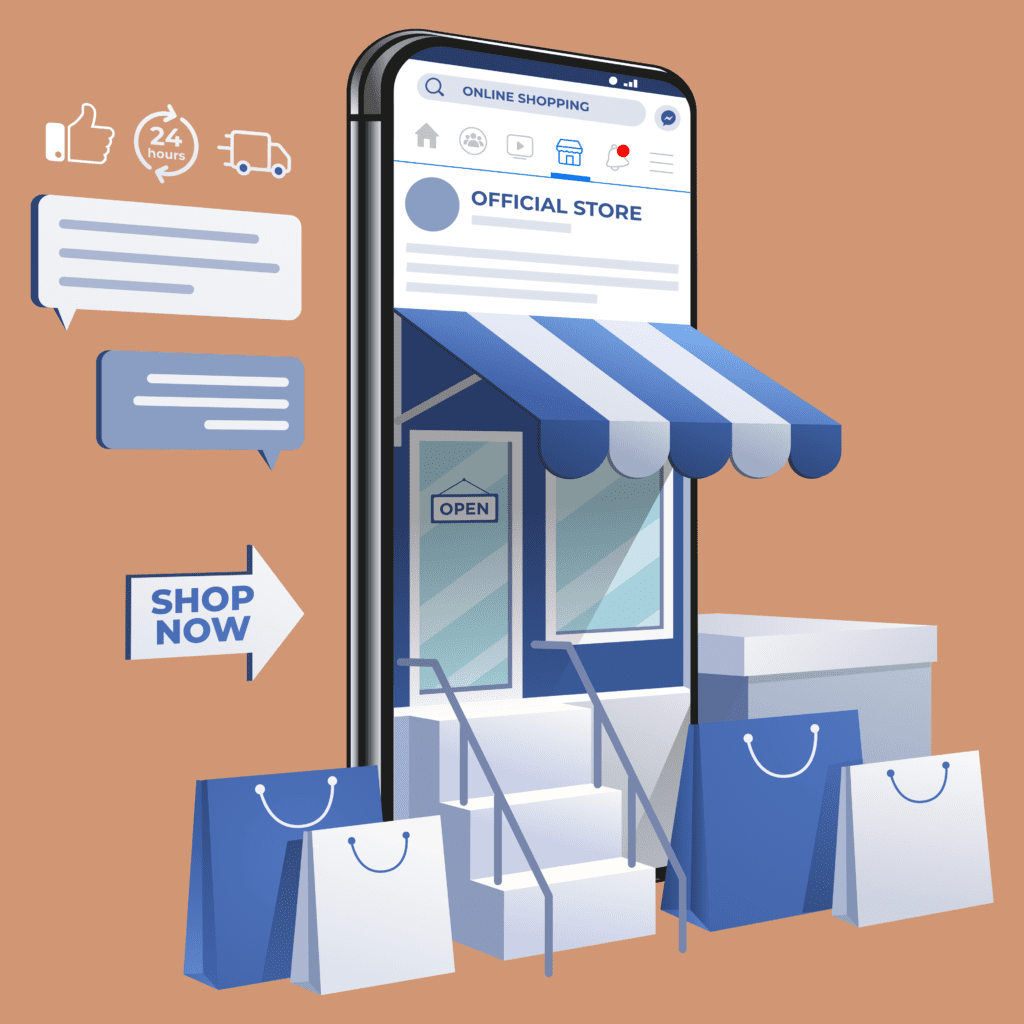Ecommerce business is one that transacts products, services, and money over the Internet, ranging in size and variety from retail beasts like Amazon to small-scale art platforms like Etsy.
The Ecommerce Industry in India is entering the next phase of rapid change. If you’ve been dreaming about jumping into the Ecommerce world of limitless gain, the clock is ticking for you. Here is the step-by-step guide on how to start a successful Ecommerce Business in India.
1. Find the right business plan
When you get an idea for a new Ecommerce business, the first step is to do the research required to bring it to life and discover its feasibility. Just like starting a restaurant, you would like to look at various places, food choices and subjects in the e-commerce sector that you are interested in and make some decisions about your particular business.
For example, you should precisely think what your Ecommerce business is going to deliver. Are you going to market goods or services? Are they physical or digital products? Where are the goods going to come from? You will also be thinking about the type of business you want to use in this respect — are you going to propose single items, bundles, subscriptions or anything else?
You can choose between two different styles of business models. Either a single seller or a multi-seller e-commerce store is available.
- Single-vendor marketplace – The benefit of this business model is that it only includes two companies – a single vendor who sells its product to other consumers. To this end, tracking a transaction between the two companies isn’t just easier. Operating costs are lower if only one supplier is payable, and the inventory is controlled more effectively.
- Multi-vendor marketplace – This model entails multiple vendors selling their wares to various customers, with each vendor needing to register with your platform. Here you can either sell your own unique product through your own business online or choose to allow other sellers to sell their goods on your shop.
2. Register your Business
Once you’ve decided on the business model you want to use to build your Ecommerce business, as well as the products you want to sell and the target audience you want to sell to, the next step is to come up with the perfect name for your brand. Along with this, you should create a finalised logo design for your company.
Next, decide on the legal framework of your business. The legal and financial consequences of the business entity form you choose for your e-commerce business are essential. In most cases, you’ll form a sole proprietorship, single-person company, limited liability partnership(LLP), or private limited company. Each of these organisation forms have advantages and disadvantages, so you might want to seek legal advice from an attorney or another legal professional to determine which is the best choice for your business.
- Request for the DIN number of the Director, available for download on official Ministry of Corporate Affairs websites, or via the DIN application (DIN 3 form).
- Ascertain that you own your Permanent Account Number (PAN) and Digital Signature Certificate.
- After you’ve obtained the DIN, you should contact the Registrar of Companies (ROC) to inquire about the availability of the company name you’ve selected.
- Apply for Goods and Services Tax (GST) qualification, a Shops and Establishment Licence (required for Payment Gateway Integration), and a Professional Tax Licence (PT).
3. Build your Website

Your ecommece website, like a physical shopfront, will be the face of your company — it’s what your customers will first see and use to find and buy your goods or services. In this respect, the development of your website will be one of the main elements of your ecommerce business.
Your ecommerce platform, whether it’s all-in-one software like Shopify or an open-source platform like Magento, will be the foundation on which you create and expand your online store. Most ecommerce platforms let you customise your template, add your domain (or buy one), manage inventory, take and ship orders, accept payments, and more.
Although there are hundreds of these platforms on the market, you may want to start your ecommerce business with one of the following standard options:
- Shopify – Shopify, perhaps the most well-known and popular e-commerce software, provides an all-in-one, user-friendly solution with a range of add-ons. Shopify subscriptions are available in four different plans, starting at $9 a month for Shopify Lite (which does not include a complete online store).
- WooCommerce – If you already have a WordPress account, you can get WooCommerce to build and manage your online store. In the e-commerce world, this piece of software is 100% free to use, download and contains all of the e-commerce functionality. WooCommerce is particularly well-suited for business owners who know how to code, as it is built on an open-source platform.
- Magneto – Finally, if you want complete control over every aspect of your online store, the open-source version of Magento could be the way to go. You can control every feature and customise your site with this e-commerce platform, but you’ll need technical knowledge (or pay for it) to do so. While this platform isn’t ideal for newcomers to e-commerce, whether you have the technological know-how or the funds to hire a developer. Magento provides the most features of any open-source solution on the market, and it’s free to download.
4. Select Payment Methods

You must ensure that your fully functioning online store allows your customers to make online purchases when setting it up. Payment methods come in various shapes and sizes, and they differ from one company to the next. You must determine which payment method would best serve the essence of your company while still appealing to your customers. It can be considered a crucial step in achieving profitability and success.
List of different payment methods for your eCommerce business:
- Credit Card/Debit Card – Card payments are one of the most commonly used and common payment methods in India and internationally. By allowing payment acceptance via cards as a global payment solution, merchants can tap into an international market. Credit cards are both convenient and safe. The customer needs to enter the card number, expiration date, and CVV, a precautionary measure. The CVV number assists in detecting fraud by matching consumer information to the CVV number. When it comes to debit cards, they are the second most common mode of payment for ecommerce. Customers who shop online under their financial constraints usually prefer debit cards. The primary distinction between a credit and debit card is that a debit card may only be used to pay with money already in the bank account, while a credit card charges for the sum charged, and payments are made at the end of the billing period.
- E-wallets – E-wallet is one of the newest trends, offering a whole new shopping experience. E-wallets are gaining popularity at a breakneck rate. E-Wallets enable both retailers and consumers to sign up. They can withdraw or deposit funds after creating an e-wallet account and connecting it to their bank account. The entire process is fast and straightforward when using an e-wallet. E-wallets, which are considered an advanced and instant digital payment process, can be integrated with mobile wallets through advanced functionality such as near-field communication (NFC). Prepaid e-wallet accounts securely store customer details as well as a variety of credit/debit cards and bank accounts. It requires only one-time registration and removes the need to re-enter details each time a payment is made.
- Bank Transfer – Though it is less common nowadays, a bank transfer is still a necessary payment method for ecommerce. It is regarded as a fallback payment mechanism if all other options fail. Additionally, some ecommerce merchants prefer to accept payments via bank transfer. Customers who have registered in internet banking will make online transactions using bank transfers. Bank transfer is the safest method since customers must authorise and authenticate transactions. It is a convenient payment method for online transactions that do not require the consumer to have a credit card.
- Cash Payment – Let’s face it that cash still reigns supreme in India. It manifests itself in the form of the cash-on-delivery option for ecommerce. For physical products and cash-on-delivery purchases, often cash is used. It does carry several risks, including the absence of a promise of an actual transaction during distribution and robbery. While cash on delivery does not always require customers to pay with actual money (they can pay with cards or mobile payments, as payment terminals are often available with delivery agents), skipping this is an absolute disaster.
5. Find Logistics Partner
Choosing the right logistics partner is critical for your ecommerce company because it provides you with an efficient and consistent method of tracking the goods being shipped at every stage. This will assist in preventing goods from going missing and assisting you in effectively responding to consumer inquiries about the planned delivery.
A third-party logistics provider must be dependable, as the brand’s image is at stake. When selecting a logistics partner, it is important that the company is capable of delivering the products on time and in good condition—as well as adhering to your company’s standards. Given the abundance of choices available, here are the considerations to consider when selecting your next logistics partner:
- Freight Management – Select a logistics company that specialises in freight management. Which means they can adapt quickly to your changing needs. When expedited delivery or an oversized shipment is needed, you must ensure that the 3PL can handle it efficiently and without taking too much time out of your day.
- Technology – Locate a logistics business that makes use of cutting-edge technology to elevate service levels. You’re looking for a company that can provide you with personalised and ground-breaking solutions.
- Scalability – The ideal logistics partner is the one that can grow with your company. You want to partner with a 3PL who will work with you in the long run so that as your company expands, it can provide services and solutions to manage a large load efficiently.
- Price – The cost of outsourcing your logistics requirements should not be the primary consideration when selecting a partner. Although you want to get the best deal possible, you also want your items to deliver on time and in good condition to ensure customer loyalty. These three things should be well worth the price you are paying.
- Customer Service – When working with a logistics organisation, good communication is critical. If they do not respond promptly to your phone calls or emails and are unable to provide solutions and services that meet your needs, you will certainly need to find another logistics provider.
6. Market your Ecommerce Business
To build a customer base and an online presence, you’ll need to market your e-commerce business effectively. Customer engagement is not always easy; the average cart abandonment rate is 69.2 percentage. To meet your audience and raise sales, it requires patience and a range of marketing tactics.
- SEO strategy – Search engine optimisation is essential for all websites, not just e-commerce ones. The more optimised your site is, the greater chance you have of ranking well, which results in increased traffic and sales. This is one of the most effective strategies for ensuring your site’s success. Regrettably, there are several components of search engine optimisation. If you want to do SEO, it will take time and effort to learn the ins and outs of it all, but the sooner you begin, the more quickly you will be able to optimise your site.
- Social Media – Social networking platforms are an important factor in building your online presence since the opportunity is unlimited. There are millions of people using these pages, and your company should take part. You will see drastic results in a short period of time if you start a social media campaign. Social media marketing is also common because there is nothing you need to spend, even though investing will make it much simpler. Begin with publishing links and contents that attract your target audience and return them to your website. There are so many different techniques that can be used for social media marketing that you can find the best one for your specific website after you have done this for a while.
- Promotions to Attract Customers – Promotions have historically been a significant component of selling every new company. And before the Internet was flooded with Ecommerce pages, new companies still had opening sales or other forms of advertising to draw customers. On the Internet, the same approach applies. If you deliver a deal or a sale, you will reach a far larger audience. Consumers adore a good deal; thus, create an incredible offer and watch as they flock to your ecommerce store.
- Advertisements – Although paid advertising is more expensive, it can be extremely successful, especially for new ecommerce stores. If you’re able to sustain a high conversion rate, paid ads will deliver incredible results. For instance, pay per click advertisement enables you to be compensated each time someone clicks on a link that directs them to your website. Once they’ve arrived on your website, it’s your responsibility to convert them. Therefore, if the user interface and conversion process are well-designed, you can quickly see positive results.
The Bottom Line
Learning how to start an e-commerce company isn’t always easy, but by taking it one step at a time, as we’ve shown, you can make the process more manageable and get your online store up and running in no time. There are several benefits to starting an e-commerce company in India rather than a brick-and-mortar one:
- Initial investment is very low
- Your online shop is open 24 hours a day, seven days a week
- You can serve customers from all over the world
It’s also much simpler and less expensive to expand operations if necessary, making an e-commerce company even more appealing to would-be entrepreneurs. If you want your company to become an Internet big success, you’ll need to take some essential steps. Keep compliant with tax laws, obtain the requisite permits, invest in customer retention and communication, and don’t forget to create a mobile-friendly platform for your e-commerce website, just as you would for any other company.
Related posts
- List Of Top 10 Online Shopping Sites In India
- What Is Dropshipping?
- Amazon FBA : Complete Beginners Guide
- How To Sell Products Online: 2024 Ultimate Guide
- What Is An Online Marketplace?
- 15 Must-Have Features For A Successful Online Store
- 22 Easy Online Business Ideas You Can Start In 2024
- 8 Major Advantages Of Online Business
- 7 Proven Ways To Boost Flipkart Sales
- How to Choose the Right E-commerce Fulfilment Partner for Your Business
- Flipkart Seller Login [2024 Updated]
- 10 Key Benefits Of Ecommerce For Your Business
- How To Start Selling On Paytm In 2024
